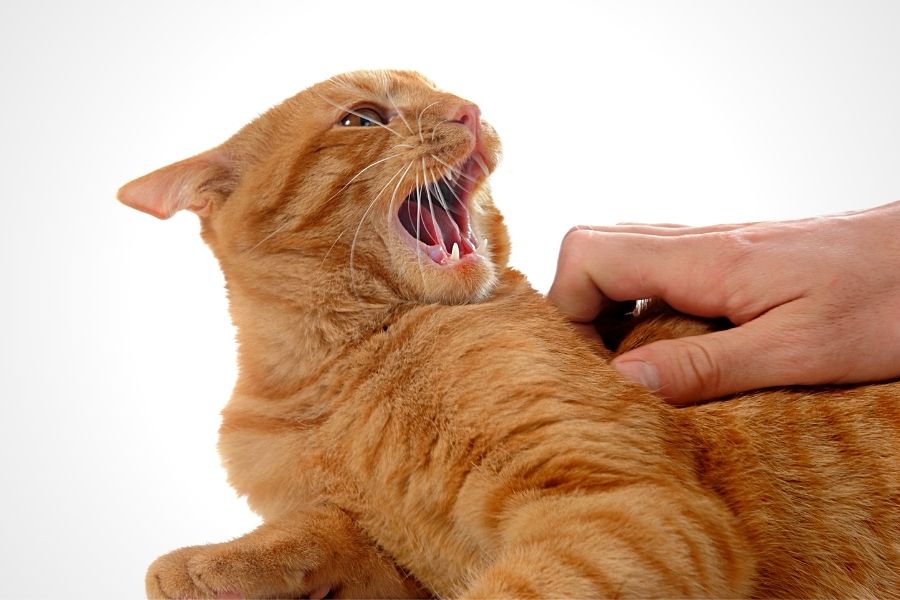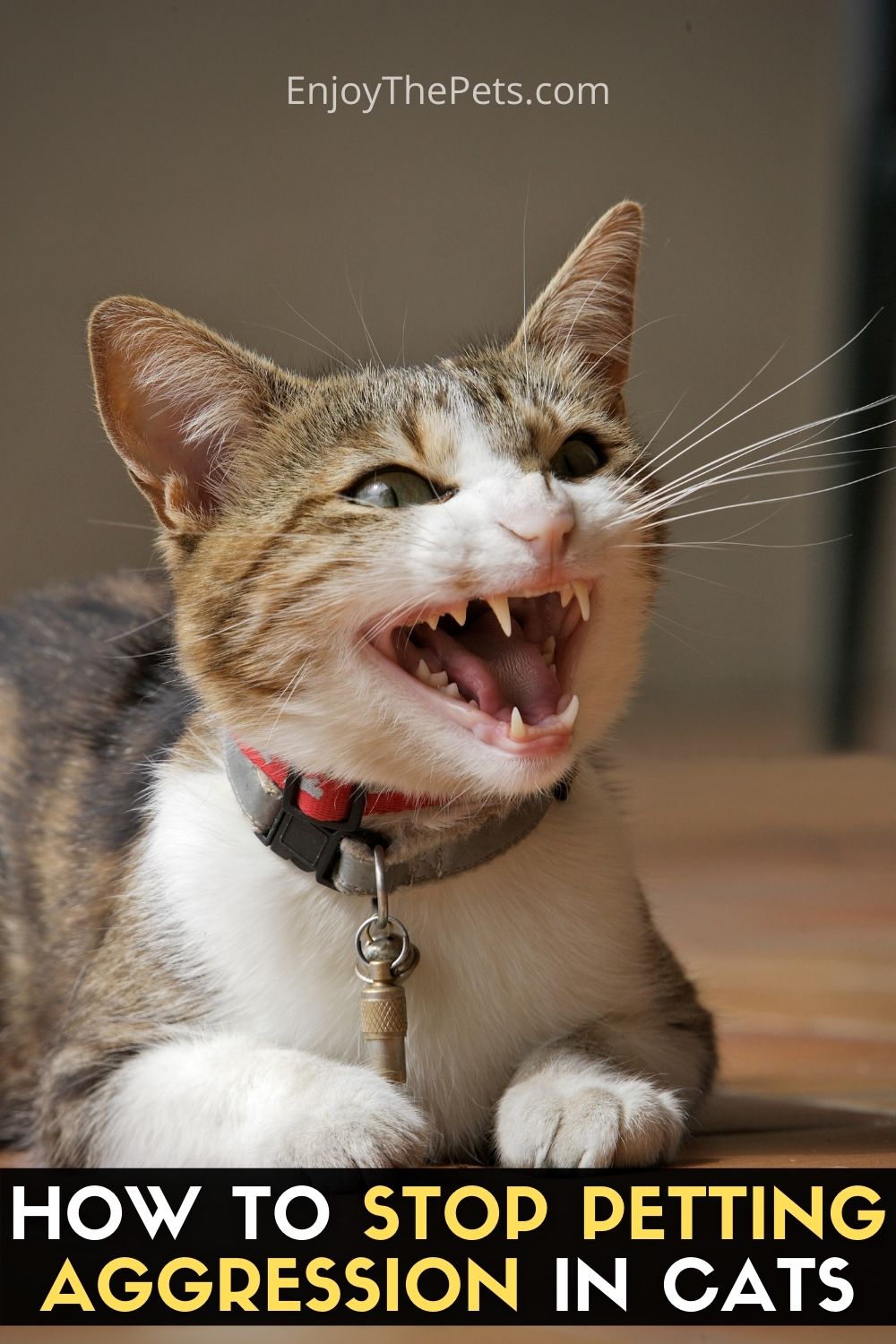How to Stop Petting Aggression in Cats

Hello, how are you today? Welcome to our blog About Pets. We hope you are very well and looking forward to a new post about Pets.
Today we want to share with you a special post:
How do you stop petting aggression?
Cat lovers often ask for help in stopping their cats' aggressive behavior, but there are many types of aggression and a single program does not work.
Of the various types of feline aggression, none confuse, frustrate, and frighten most owners as much as petting aggression, also called state-related aggression.
The cat asks for attention and loves to be stroked, but then bites you after a few strokes.
These cats use the "leave me alone" bite to stop interactions such as petting, being picked up or closer, or being moved from their favorite position.
It is a very common behavior in cats, but you can work with your pet to stop it.
Why is your cat aggressive during petting?
Unlike dogs, cats often have a low tolerance for petting and can quickly become overstimulated. The time it takes for petting to go from pleasant to uncomfortable varies from cat to cat.
But when it reaches that point, the cat reacts almost as if it is hurt or in pain. Animal behaviorists refer to this as petting-induced aggression.
Petting aggression appears more common in young, energetic cats that are removed early from their litter and left alone for long periods during the day.
Slapping the cat can make aggression worse as most cats view physical correction as a challenge and can become even more aggressive during subsequent petting sessions.
Aggressive stroking can be explosive and dangerous, especially for well-meaning young children. Learn to identify and avoid situations that can lead to this behavior.
Rule out medical causes
There are some medical conditions that can cause a cat to become aggressive, and these should be ruled out before attempting to modify your pet's behavior.
Ask your vet to check for signs of arthritis, injury, or dental problems to make sure it's not the physical pain that is causing your cat to aggressively reject your petting.
Common signs
Cat communication varies somewhat between cats, just like human speech can include different accents or colloquialisms.
But body language offers clues as to what your cat is trying to do:
An active tail and downward ears point to an imminent attack.
Sudden dilation of the cat's pupils indicates arousal.
Increased heart rate (which you can feel if the cat is on your lap) indicates that the cat is alert.
Low growling purrs warn you to back off.
Wavy skin on the back suggests aggravation or irritation.
Any sign or combination of signs means that scratching or biting is imminent.
Prevention
As long as biting and scratching works, your cat will continue to use them to control the interaction. Make these behaviors unnecessary by avoiding situations that provoke them and/or controlling the circumstances so that the cat never has the opportunity to bite or grab its claws.
However, be consistent and practice tough love. If he gives up before you've established the ground rules for petting and aggression, you may need to start conditioning all over again.
And remember, a pet's bad habits often get worse just before they disappear, as your cat tries harder to get the previous successful behavior back on track.
Behaviorists call this an extinction burst, and when it happens, it means you're on the right track.
Caress threshold
Cats accept other cats' head and neck grooming. But full-body petting from a human can seem unacceptable and make the cat uncomfortable or uncomfortable.
It is this feeling of discomfort that stimulates the bite.
Limit your strokes to the head or nape of the cat. Next, identify your petting threshold. In other words, count the number of hits your cat allows before lashing out;
Pay close attention to your body language so that you can stop petting before the cat bites.
It can be three strokes, five or more. Once you've identified your limit, stop before the cat attacks so that you control the interaction.
This is the key to reversing this behavior: letting the cat know that you are in charge of the situation.
When you reach the threshold of petting, if the cat is sitting on your lap, do not push it or it could scratch it in an attempt to attack your hands.
To end the petting, simply get up and throw the cat without touching it. Do not interact with the cat, which may cry to get your attention. Other cats in this situation may just run away and sulk.
Use positive reinforcement
The goal in these situations is to teach the cat that all the good things in life (play, food, attention) must be earned and that you are the boss.
Then the rewards and resources can be used to motivate the cat to respond appropriately.
For example, teach the cat to "come" by using dinner time in his favor.
Before the cat reaches for the food bowl, say “come” in a loud, happy voice and then turn on the can opener, shake the kibble bag, or grab the treat jar.
Your cat has already learned these signals and what time to run to his bowl, so teach him to associate the come command with the action. When the cat obeys, reward him with the treat or food bowl.
You can also clicker train your cat by combining food treats with a clicker that makes noise. Eventually, your cat will start to think of the clicker as the reward and the treats may no longer be needed.
Use a treat or toy to steer your kitten away from furniture or out of the way instead of pushing or lifting it, which puts your hands within the impact zone.
Say "move" and drop the treat on the ground or lure the cat with a feather.
If the cat is in your chair, tilt or shake it to let it go on its own. Eventually, you will only need to say the word move and offer a sweeping gesture to make the cat obey, and you will have avoided an encounter that could otherwise lead to a bite.
Desensitization
Finally, if you wish, you can desensitize the cat and improve his tolerance to petting. If he allows three hits before his ears and tail indicate distress, add one more hit, along with a reward like a clicker; then stop and throw the cat off your lap before he can bite.
By adding a punch each week, you can increase your threshold over time by avoiding your teeth.
Enjoy The Video Tutorial about You’re Petting Your Cat All Wrong!
Source: Jackson Galaxy
Did you find this post Useful or Inspiring? Save THIS PIN to your PETS Board on Pinterest! 😊

Ok, That is all for now…
If you enjoyed this article please, Share and Like our Facebook Page. Thanks.
See you in the next post, Have a Wonderful Day!

You May Also Like 👇🏼